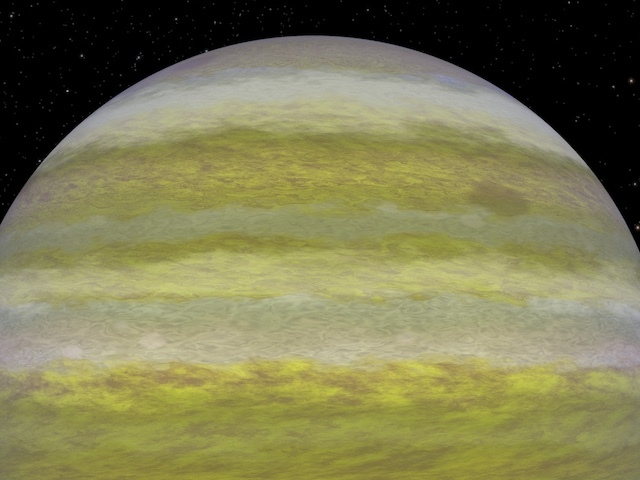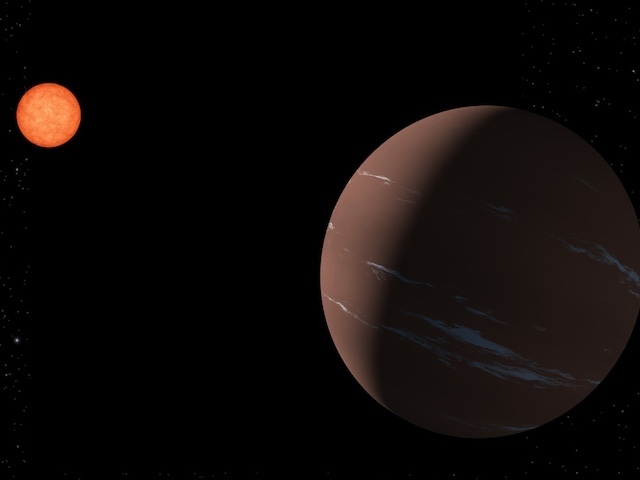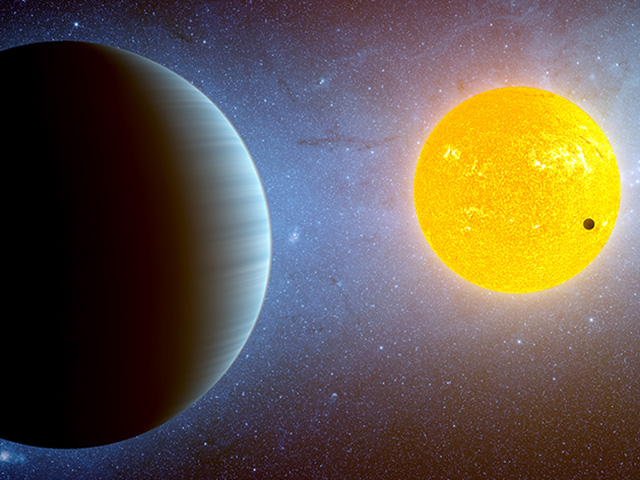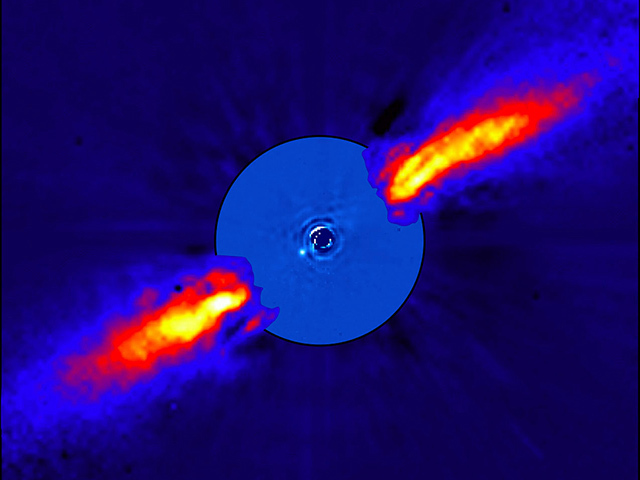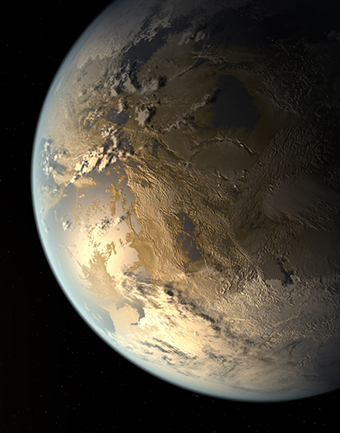News | April 2, 2024
That Starry Night Sky? It's Full of Eclipses
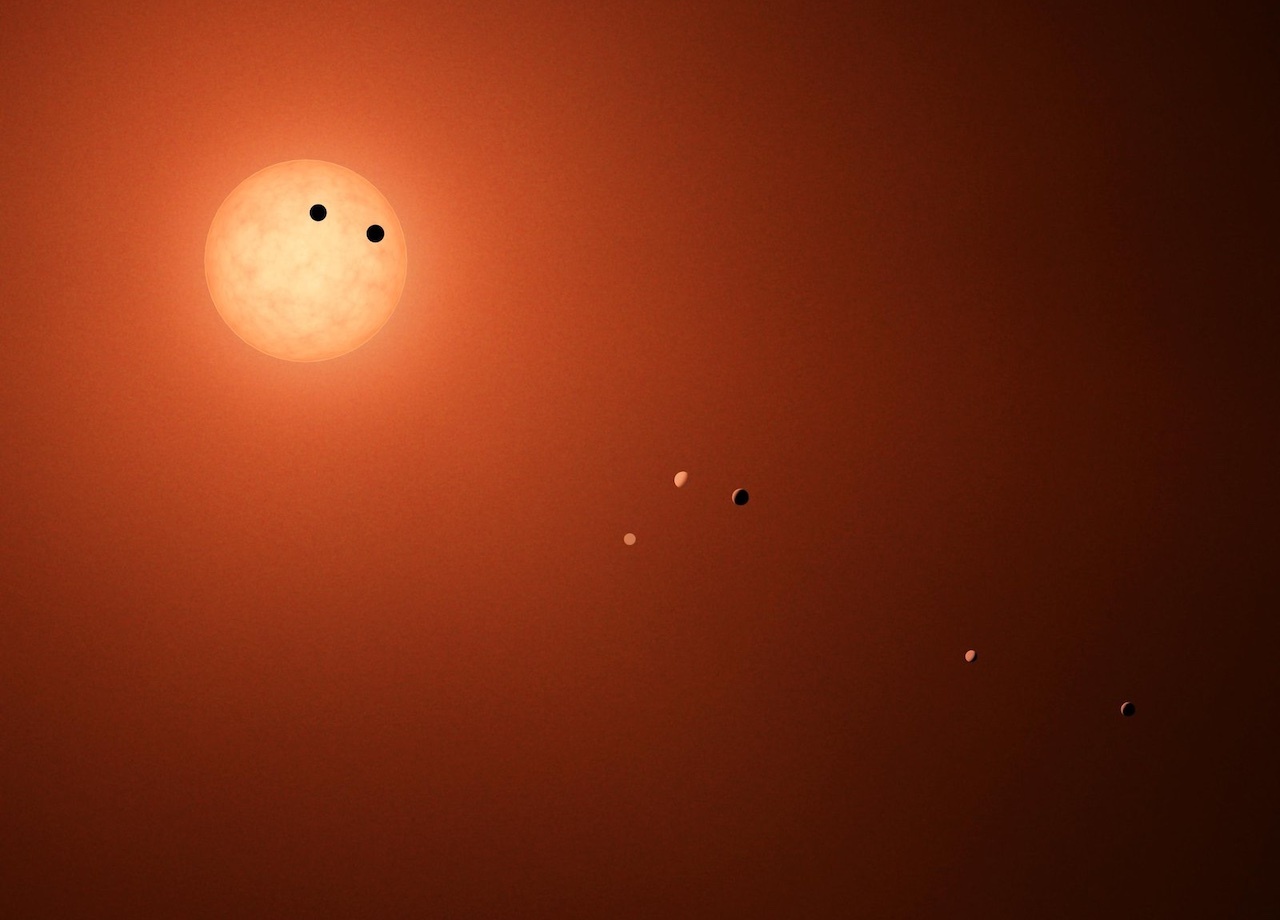
Artist's concept shows the TRAPPIST-1 planets as they might be seen from Earth using an extremely powerful – and fictional – telescope. Credit: NASA/JPL-Caltech
Our star, the Sun, on occasion joins forces with the Moon to offer us Earthlings a spectacular solar eclipse – like the one that will be visible to parts of the United States, Mexico, and Canada on April 8.
But out there, among the other stars, how often can we see similar eclipses? The answer depends on your point of view. Literally.
On Earth, a total solar eclipse occurs when the Moon blocks the Sun’s disk as seen from part of Earth’s surface. In this case, the “path of totality” will be a strip cutting across the country, from Texas to Maine.
We also can see “eclipses” involving Mercury and Venus, the two planets in our solar system that orbit the Sun more closely than Earth, as they pass between our telescopes and the Sun (though only by using telescopes with protective filters to avoid eye damage). In these rare events, the planets are tiny dots crossing the Sun’s much larger disk.
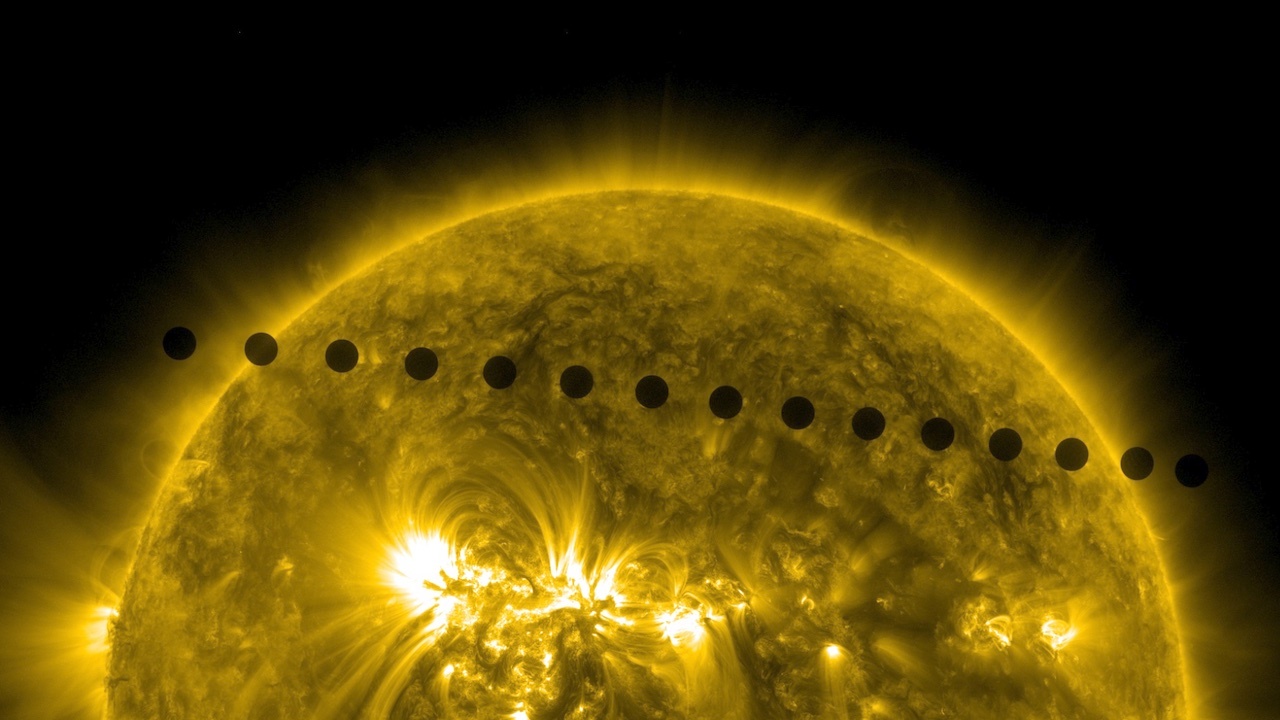
And astronomers can, in a sense, “see” eclipses among other systems of planets orbiting their parent stars. In this case, the eclipse is a tiny drop in starlight as a planet, from our point of view, crosses the face of its star. That crossing, called a transit, can register on sensitive light sensors attached to telescopes on Earth and those in space, such as NASA’s Hubble Space Telescope, James Webb Space Telescope, or TESS (the Transiting Exoplanet Survey Satellite). It’s how the bulk of the more than 5,500 confirmed exoplanets – planets around other stars – have been detected so far, although other methods also are used to detect exoplanets.
“A solar eclipse is a huge transit,” said Allison Youngblood, the deputy project scientist for TESS at NASA’s Goddard Space Flight Center in Greenbelt, Maryland.
And both types of “transits” – whether they involve solar eclipses or exoplanets – can yield world-changing science. Solar eclipse observations in 1919 helped prove Einstein’s theory of general relativity, when the bending of a star’s light by the Sun’s gravity caused the star’s apparent position to shift – showing that gravity causes space and time to curve around it.
Exoplanet transits also provide far more than just detections of distant planets, Youngblood said.
“The planet passes in front of the star, and blocks a certain amount of the star’s light,” she said. “The dip [in starlight] tells us about the size of the planet. It gives us a measurement of the radius of the planet.”
Careful measurements of multiple transits also can reveal how long a year is on an exoplanet, and provide insights into its formation and history.Careful measurements of multiple transits also can provide insights into exoplanet formation and history.
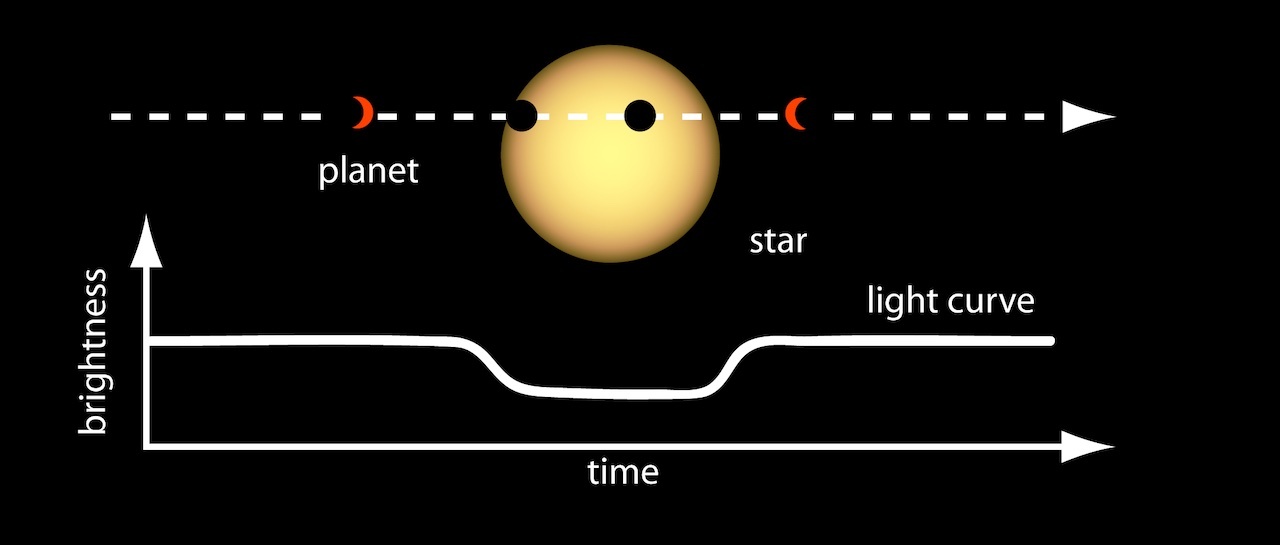
And the starlight shining through the exoplanet’s atmosphere during its transit, if measured using an instrument called a spectrograph, can reveal deeper characteristics of the planet itself. The light is split into a rainbow-like spectrum, and slices missing from the spectrum can indicate gases in the planet’s atmosphere that absorbed that “color” – or wavelength.
“Measuring the planet at many wavelengths tells us what chemicals and what molecules are in that planet’s atmosphere,” Youngblood said.
Eclipses are such a handy way to capture information about distant worlds that scientists have learned how to create their own. Instead of waiting for eclipses to occur in nature, they can engineer them right inside their telescopes. Instruments called coronagraphs, first used on Earth to study the Sun’s outer atmosphere (the corona), are now carried aboard several space telescopes. And when NASA’s next flagship space telescope, the Nancy Grace Roman Space Telescope, launches by May 2027, it will demonstrate new coronagraph technologies that have never been flown in space before. Coronagraphs use a system of masks and filters to block the light from a central star, revealing the far fainter light of planets in orbit around it.
Of course, that isn’t quite as easy as it sounds. Whether searching for transits, or for direct images of exoplanets using a coronagraph, astronomers must contend with the overwhelming light from stars – an immense technological challenge.
“An Earth-like transit in front of stars is equivalent to a mosquito walking in front of a headlight,” said David Ciardi, chief scientist at the NASA Exoplanet Science Institute at Caltech. “That’s how little light is blocked.”
We don’t have this problem when viewing solar eclipses – “our very first coronagraphs,” Ciardi says. By pure happenstance, the Moon covers the Sun completely during an eclipse.
“A solar eclipse is like a human walking in front of a headlight,” he said.
We would have no such luck on other planets in our solar system.
Mars’ oddly shaped moons are too small to fully block the Sun during their transits; and while eclipses might be spectacular among the outer planets – for instance, Jupiter and its many moons – they wouldn’t match the total coverage of a solar eclipse.

We happen to be living at a fortunate time for eclipse viewing. Billions of years ago, the Moon was far closer to Earth, and would have appeared to dwarf the Sun during an eclipse. And in about 700 million years, the Moon will be so much farther away that it will no longer be able to make total solar eclipses.
“A solar eclipse is the pinnacle of being lucky,” said Anjali Tripathi, an astrophysicist at NASA's Jet Propulsion Laboratory in Southern California. “The Moon’s size and distance allow it to completely block out the Sun’s light. We’re at this perfect time and place in the universe to be able to witness such a perfect phenomenon.”


